Abstract
Merkel cells are specialized skin receptor cells, characterized by their particular location in the epidermis and close association with nerve terminals. Although they can be distinguished ultrastructurally by their small, electron-dense secretory granules, there is no specific and reliable method for identifying them by light microscopy. Using antibodies to neuron-specific enolase (NSE), the authors have shown sparsely distributed groups of specifically immunostained cells and associated nerve terminals in the nose skin of cats and rats. These cells were easily distinguished from other epithelial cell types, including melanocytes and Langerhans cells and had all the morphologic features of Merkel cells and their so-called neurite complexes, including the characteristic cytoplasmic secretory granules (60 nm in diameter). NSE immunostaining is a simple and reliable method for the specific light-microscopic staining of Merkel cells and provides further evidence for NSE as a marker for the diffuse neuroendocrine system.
Full text
PDF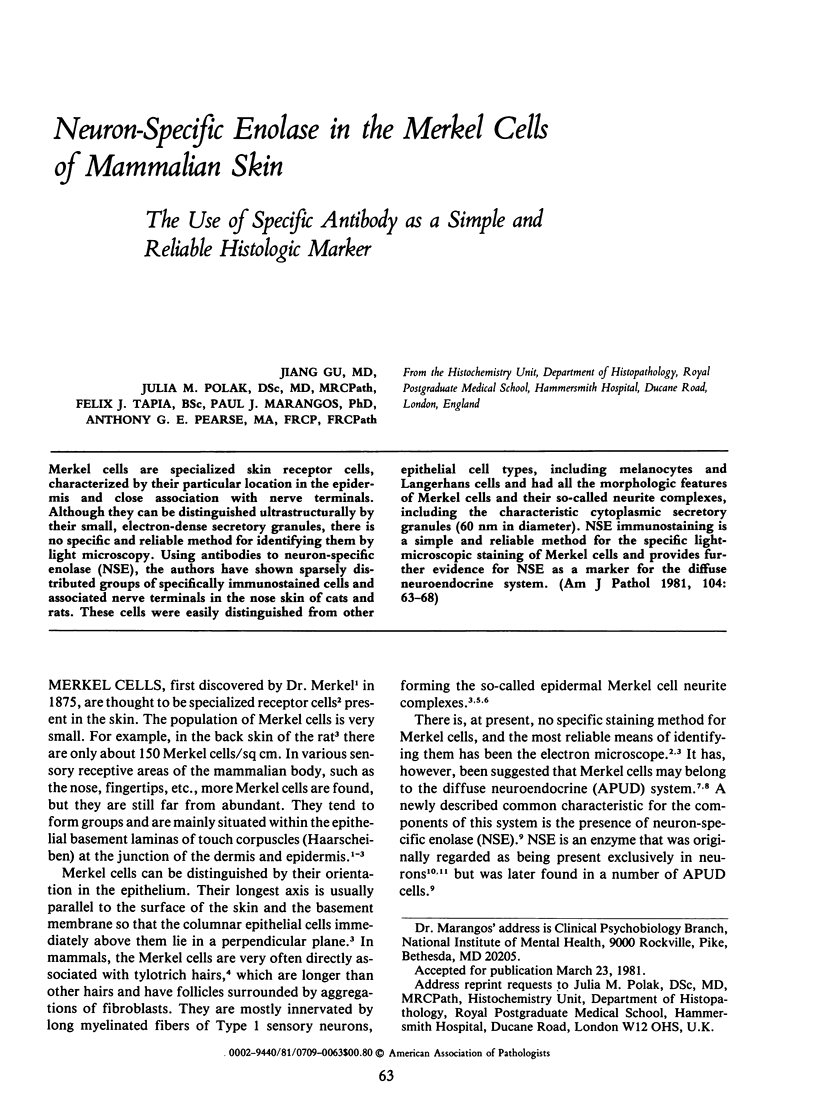
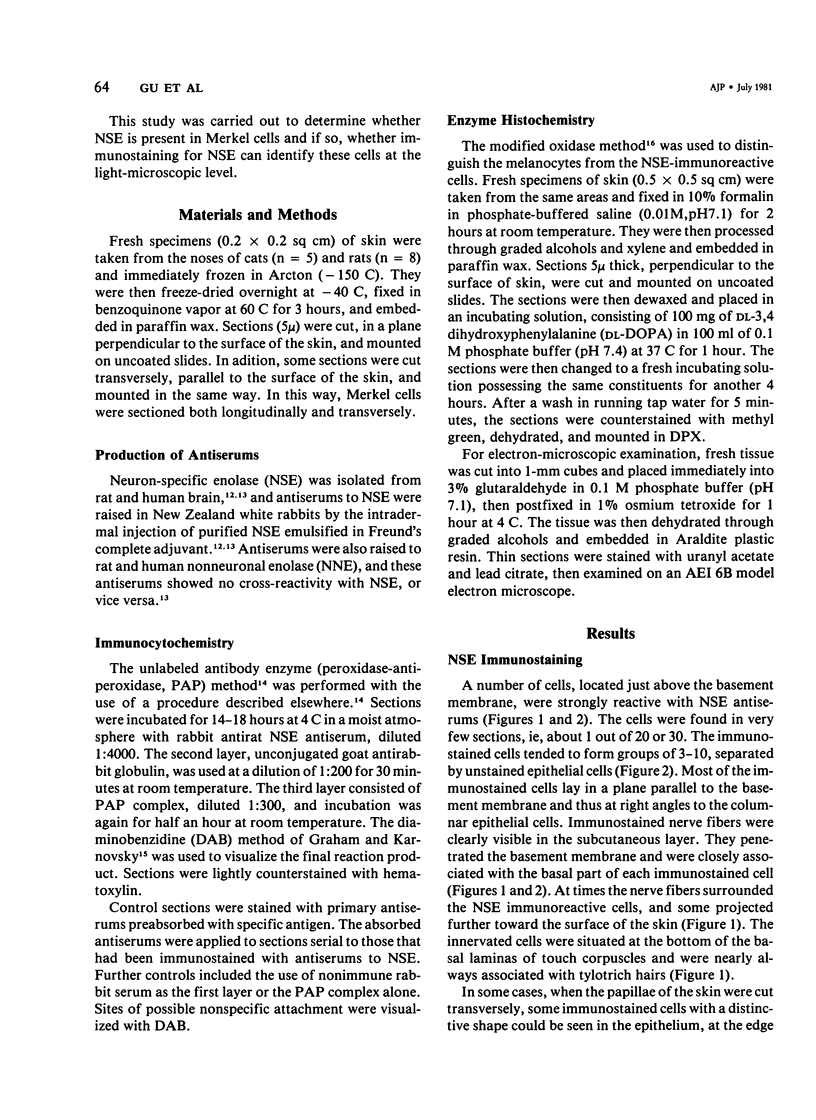
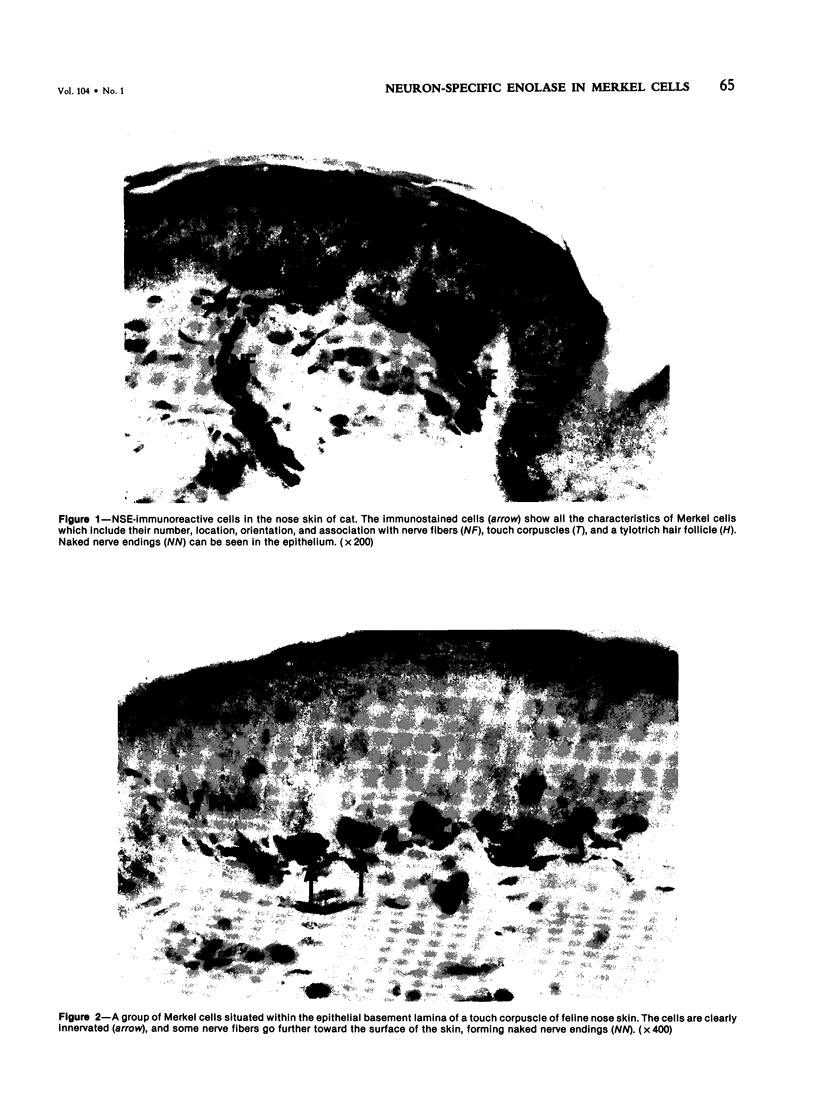
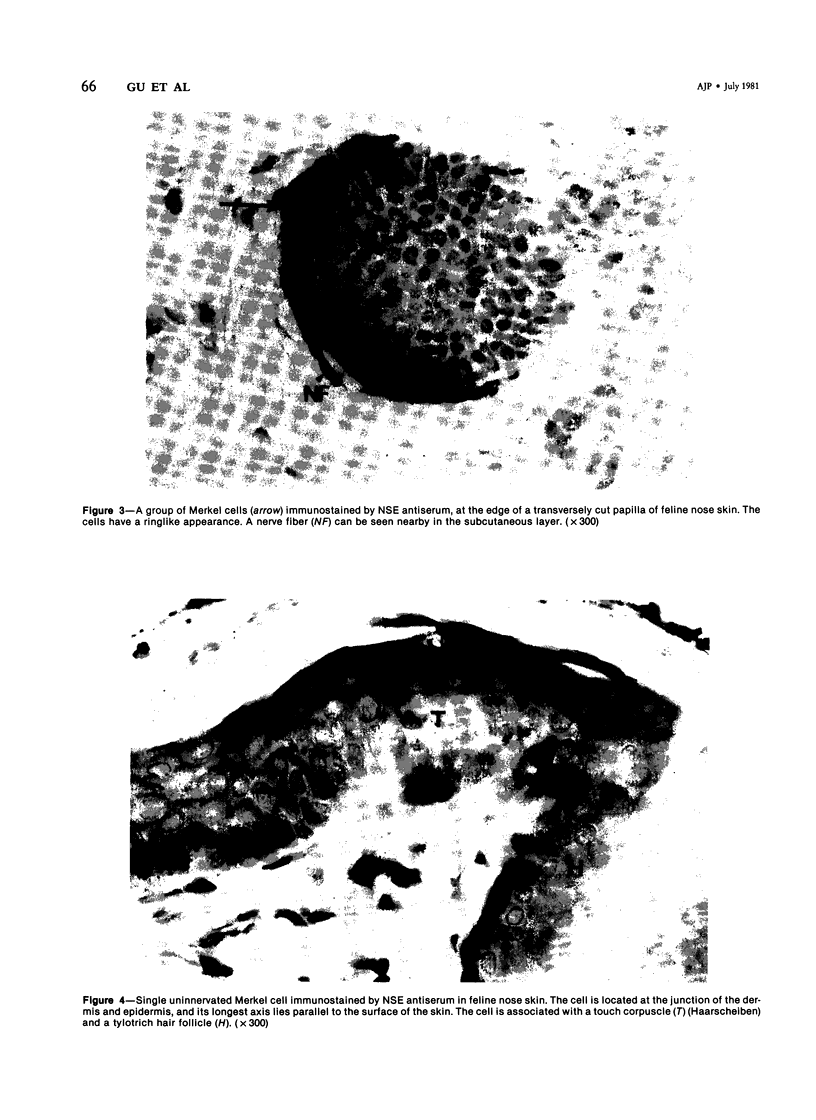
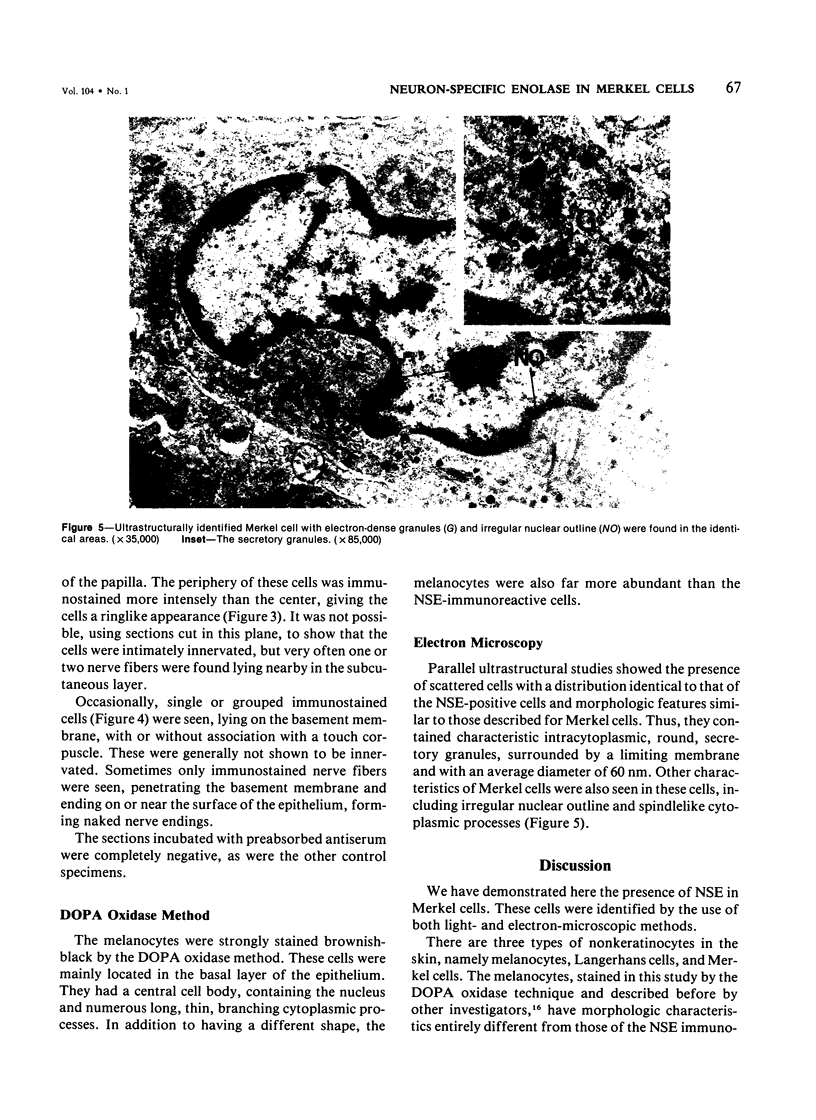
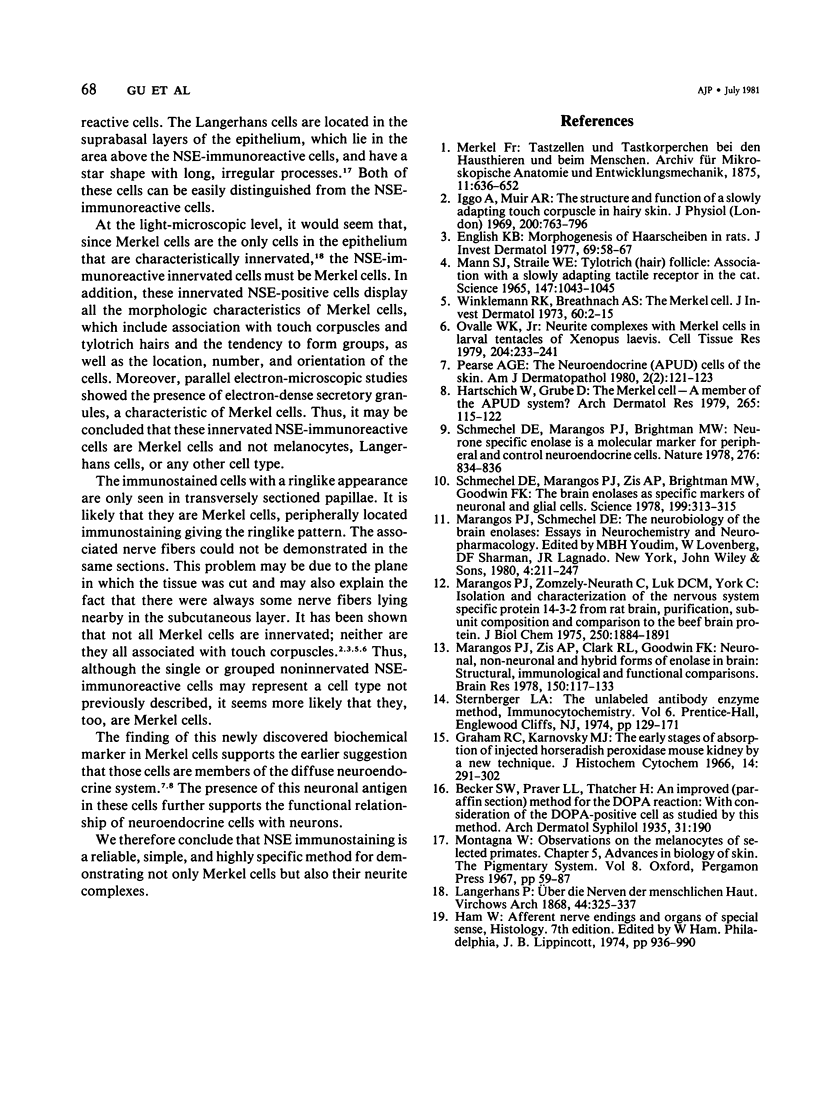
Images in this article
Selected References
These references are in PubMed. This may not be the complete list of references from this article.
- English K. B. Morphogenesis of Haarscheiben in rats. J Invest Dermatol. 1977 Jul;69(1):58–67. doi: 10.1111/1523-1747.ep12497877. [DOI] [PubMed] [Google Scholar]
- Graham R. C., Jr, Karnovsky M. J. The early stages of absorption of injected horseradish peroxidase in the proximal tubules of mouse kidney: ultrastructural cytochemistry by a new technique. J Histochem Cytochem. 1966 Apr;14(4):291–302. doi: 10.1177/14.4.291. [DOI] [PubMed] [Google Scholar]
- Hartschuh W., Grube D. The Merkel cell--a member of the APUD cell system. Fluorescence and electron microscopic contribution to the neurotransmitter function of the Merkel cell granules. Arch Dermatol Res. 1979 Jun 25;265(2):115–122. doi: 10.1007/BF00407875. [DOI] [PubMed] [Google Scholar]
- Iggo A., Muir A. R. The structure and function of a slowly adapting touch corpuscle in hairy skin. J Physiol. 1969 Feb;200(3):763–796. doi: 10.1113/jphysiol.1969.sp008721. [DOI] [PMC free article] [PubMed] [Google Scholar]
- MANN S. J., STRAILE W. E. TYLOTRICH (HAIR) FOLLICLE: ASSOCIATION WITH A SLOWLY ADAPTING TACTILE RECEPTOR IN THE CAT. Science. 1965 Feb 26;147(3661):1043–1045. doi: 10.1126/science.147.3661.1043. [DOI] [PubMed] [Google Scholar]
- Marangos P. J., Zis A. P., Clark R. L., Goodwin F. K. Neuronal, non-neuronal and hybrid forms of enolase in brain: structural, immunological and functional comparisons. Brain Res. 1978 Jul 7;150(1):117–133. doi: 10.1016/0006-8993(78)90657-1. [DOI] [PubMed] [Google Scholar]
- Marangos P. J., Zomzely-Neurath C., Luk D. C., York C. Isolation and characterization of the nervous system-specific protein 14-3-2 from rat brain. Purification, subunit composition, and comparison to the beef brain protein. J Biol Chem. 1975 Mar 10;250(5):1884–1891. [PubMed] [Google Scholar]
- Ovalle W. K., Jr Neurite complexes with Merkel cells in larval tentacles of Xenopus laevis. Cell Tissue Res. 1979 Dec;204(2):233–241. doi: 10.1007/BF00234635. [DOI] [PubMed] [Google Scholar]
- Pearse A. G. The neuroendocrine (APUD) cells of the skin. Am J Dermatopathol. 1980 Summer;2(2):121–123. doi: 10.1097/00000372-198000220-00002. [DOI] [PubMed] [Google Scholar]
- Schmechel D., Marangos P. J., Brightman M. Neurone-specific enolase is a molecular marker for peripheral and central neuroendocrine cells. Nature. 1978 Dec 21;276(5690):834–836. doi: 10.1038/276834a0. [DOI] [PubMed] [Google Scholar]
- Schmechel D., Marangos P. J., Zis A. P., Brightman M., Goodwin F. K. Brain endolases as specific markers of neuronal and glial cells. Science. 1978 Jan 20;199(4326):313–315. doi: 10.1126/science.339349. [DOI] [PubMed] [Google Scholar]
- Winkelmann R. K., Breathnach A. S. The Merkel cell. J Invest Dermatol. 1973 Jan;60(1):2–15. doi: 10.1111/1523-1747.ep13069480. [DOI] [PubMed] [Google Scholar]







